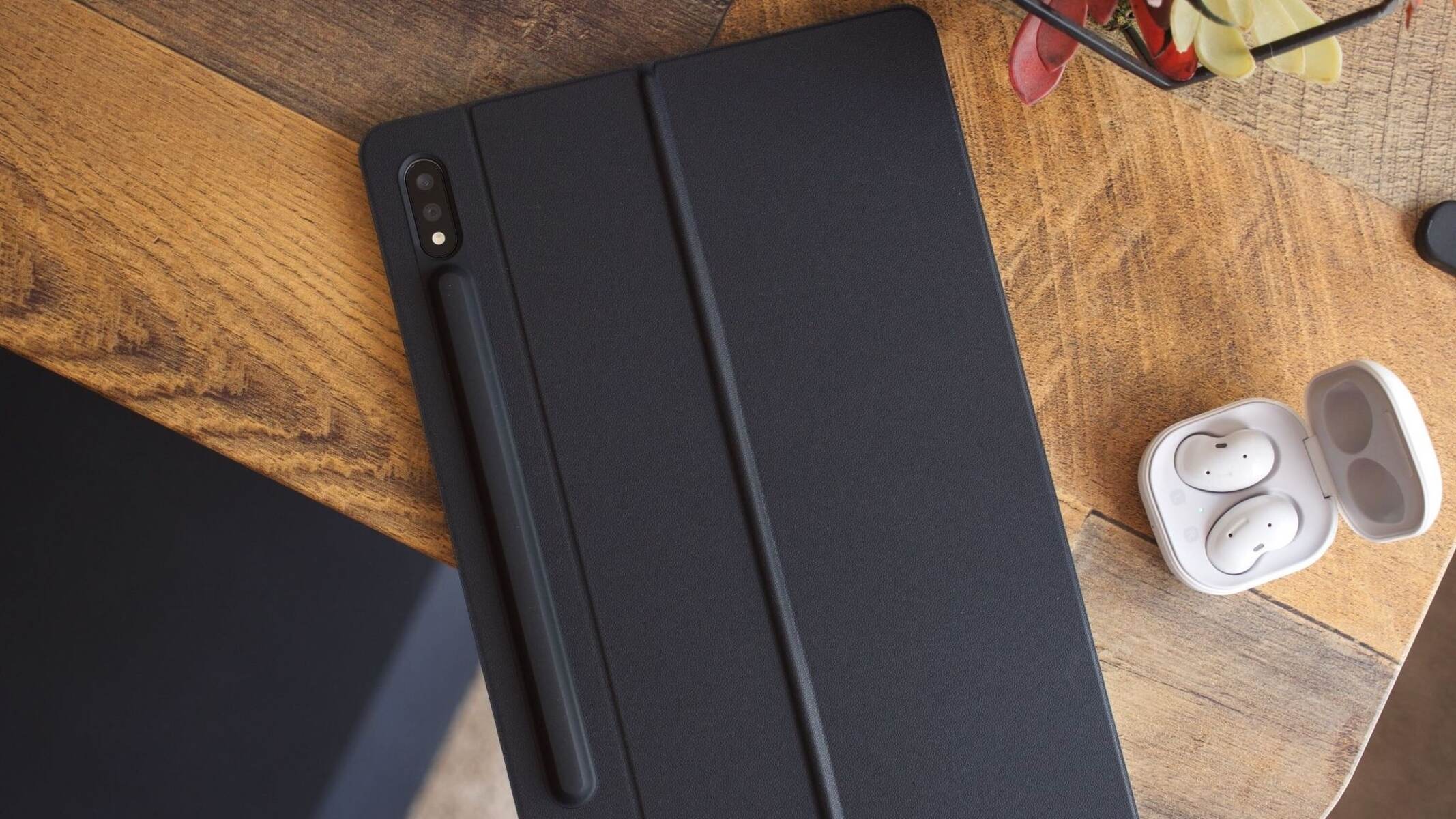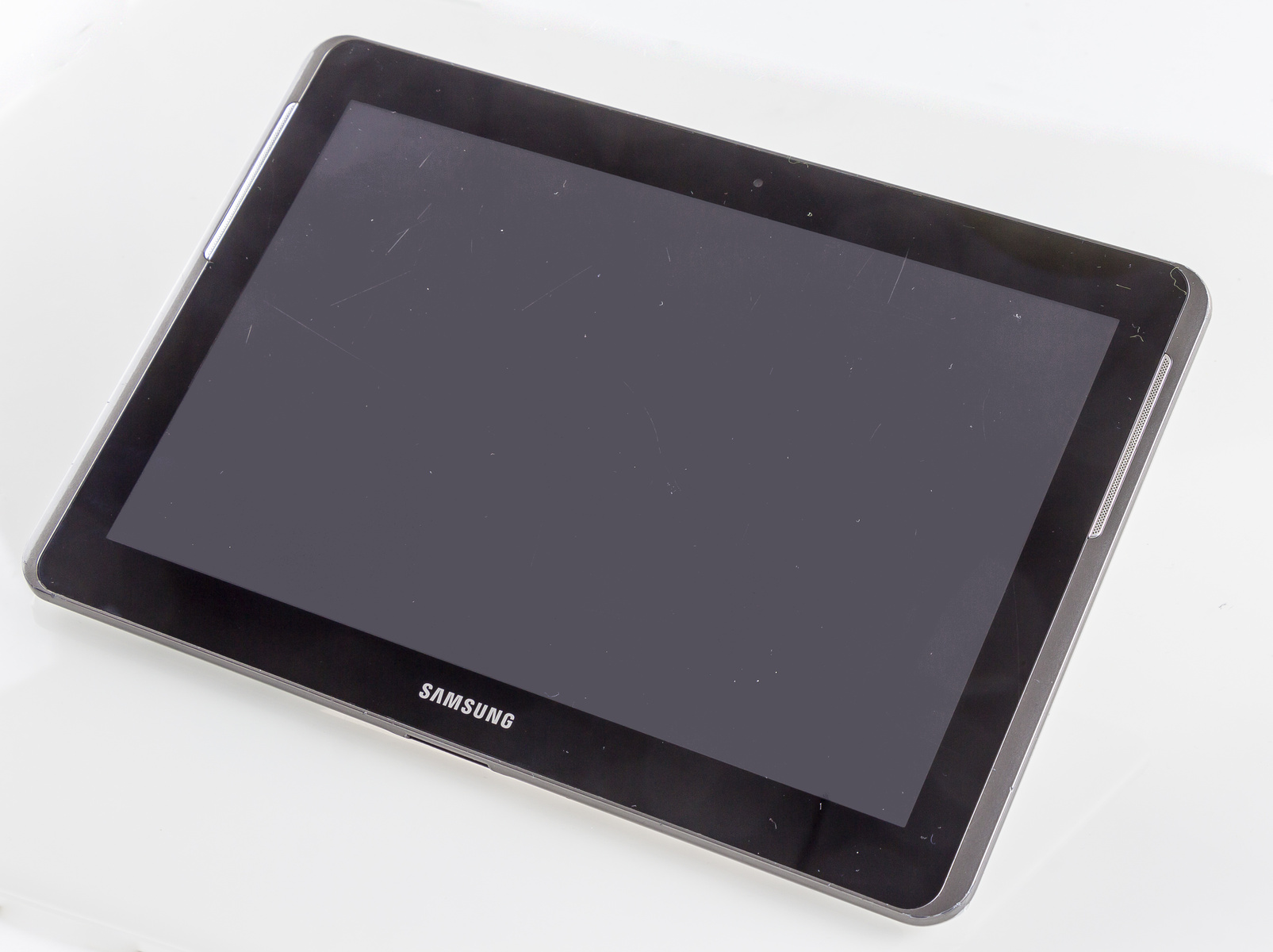Introduction
The Samsung Galaxy series has firmly established itself as one of the most popular and sought-after smartphone lineups in the world. With cutting-edge features and stylish designs, Samsung Galaxy devices have captured the hearts of consumers globally. But have you ever wondered where these remarkable devices are made?
In this article, we will delve into the intriguing world of Samsung Galaxy manufacturing. We will take a closer look at the manufacturing process and explore the different factories where these devices are produced. Join us on this virtual tour as we uncover the locations and secrets behind the creation of Samsung Galaxy smartphones.
From the very beginning, Samsung Galaxy has been synonymous with innovation and quality. Each device undergoes a meticulously planned manufacturing process to ensure that it meets the high standards set by Samsung. The company heavily invests in research and development, constantly pushing boundaries to offer consumers the latest and most advanced technology.
As the demand for Samsung Galaxy devices continues to grow, so does the need for large-scale manufacturing facilities. Samsung has strategically established factories in various locations across the globe to efficiently cater to global markets. Each factory plays a crucial role in ensuring the smooth production and distribution of these popular smartphones.
So, if you’ve ever been curious about where your Samsung Galaxy device comes from and how it is made, keep reading as we delve deeper into the fascinating world of Samsung Galaxy manufacturing.
Samsung Galaxy: A Brief Overview
The Samsung Galaxy series is a flagship line of smartphones and tablets produced by Samsung Electronics, one of the largest technology companies in the world. Since its inception, the Galaxy series has become synonymous with cutting-edge technology, sleek designs, and exceptional performance.
Samsung introduced the first Galaxy device in 2009, aiming to offer consumers a premium alternative to existing smartphones. Over the years, the Galaxy lineup has expanded to include a wide range of models, catering to various market segments and price points. From the high-end Galaxy S and Note series to the mid-range Galaxy A and budget-friendly Galaxy J series, Samsung has created a comprehensive lineup to suit diverse consumer needs.
One of the key factors that contribute to the popularity of Samsung Galaxy devices is their innovative features and advanced technology. Samsung consistently pushes boundaries in terms of display quality, camera capabilities, processing power, and overall user experience. The company’s commitment to innovation has earned it a loyal customer base and numerous accolades.
The Galaxy series is also known for its sleek and stylish designs. Samsung pays attention to detail, incorporating premium materials and a seamless build quality into its devices. From the slim profile to the edge-to-edge Infinity Displays, Samsung Galaxy devices offer a visually stunning experience.
Furthermore, Samsung Galaxy devices are powered by the company’s own Exynos processors or Qualcomm Snapdragon processors, depending on the region. These powerful processors ensure smooth multitasking, fast app loading times, and efficient performance for a wide range of tasks.
Another notable feature of Samsung Galaxy devices is the user-friendly interface provided by the Android operating system. Samsung customizes the Android OS, adding its own layer of features and functionalities known as the Samsung Experience or One UI. This personalized interface enhances user experience, making it more intuitive and convenient.
With each new generation of Galaxy devices, Samsung introduces exciting new features and improvements. From enhanced camera capabilities and biometric security measures to AI-powered virtual assistants and waterproof designs, Samsung Galaxy devices are constantly evolving to meet the changing needs and desires of consumers.
In the next section, we will explore the intricate manufacturing process that brings these exceptional devices to life.
The Manufacturing Process of Samsung Galaxy
The manufacturing process of Samsung Galaxy devices is a complex and highly organized procedure that involves numerous steps and careful attention to detail. From the sourcing of components to the final assembly, each stage is vital in creating the high-quality devices that Samsung is known for.
It all begins with the sourcing of raw materials and components. Samsung collaborates with a network of suppliers from around the world to secure the necessary components for their devices. These components typically include semiconductors, memory chips, displays, cameras, batteries, and various other electronic parts.
Once the components are sourced, they undergo a thorough quality control process to ensure they meet Samsung’s rigorous standards. This involves testing each component for functionality, durability, and compatibility with other parts.
After the components pass the quality control tests, they are sent to the manufacturing facilities for assembly. Samsung operates several manufacturing plants located in different countries to meet the demands of a global market. These state-of-the-art facilities are equipped with advanced machinery and specialized production lines.
The assembly process starts with the placement of components onto circuit boards. This is done using highly automated and precise machinery to ensure accurate placement and alignment. The circuit boards, now populated with components, go through reflow soldering to permanently attach the components to the board.
Once the boards are complete, they are then integrated into the device’s housing. The housing, which includes the front and back panels, frame, and buttons, is carefully designed and manufactured to provide a seamless and visually appealing device. The boards and housing are brought together, and the final assembly process begins.
The final assembly involves connecting the various components together, securing them in place, and installing the necessary software. This includes attaching the display, connecting ribbon cables, inserting the battery, and testing the device’s functionality before it moves on to the next stage.
Quality control is a critical part of the manufacturing process. Samsung conducts rigorous testing to ensure that each device meets specific standards for performance, durability, and functionality. This includes tests for touchscreen responsiveness, camera quality, audio quality, and overall system performance.
Once the devices pass all the tests, they are carefully packaged and prepared for distribution. This involves placing the devices in boxes, along with the necessary accessories such as chargers and earphones, and labeling them for shipment to various markets around the world.
In the next section, we will uncover the various factories where Samsung Galaxy devices are manufactured.
Samsung Galaxy Factories Around the World
As a global leader in technology, Samsung operates multiple manufacturing facilities around the world to meet the ever-increasing demand for Samsung Galaxy devices. These factories are strategically located to cater to different regional markets while ensuring efficient production and distribution.
One of the primary locations for Samsung Galaxy manufacturing is South Korea, the home country of Samsung. The main factory, located in Gumi, South Korea, is one of the largest smartphone manufacturing facilities in the world. It houses advanced production lines and cutting-edge equipment, enabling Samsung to produce high-quality devices with precision and efficiency.
Another significant manufacturing hub for Samsung Galaxy devices is Vietnam. Samsung has invested heavily in building large-scale factories in Vietnam, including the factory complex in Bac Ninh and the massive factory in Thai Nguyen. These facilities contribute significantly to the production capacity of Samsung Galaxy devices, catering to both domestic and international markets.
China is also an important manufacturing location for Samsung Galaxy devices. The factories located in Huizhou and Tianjin play a crucial role in meeting the demands of the Chinese market. These facilities are equipped with advanced manufacturing technologies and employ a large workforce to ensure efficient production and fast turnaround times.
In recent years, India has emerged as a key manufacturing destination for Samsung. The company has built manufacturing facilities in Noida, Uttar Pradesh, which are focused on producing smartphones for the Indian market. These factories help Samsung meet the growing demand in India and also contribute to the government’s “Make in India” initiative.
Besides these major manufacturing locations, Samsung also has production facilities in other countries, such as Brazil, Indonesia, and Malaysia. These factories serve the local markets and contribute to Samsung’s global production capacity.
It is important to note that while Samsung operates factories in different countries, the components used in the manufacturing process may come from various suppliers located worldwide. Samsung works closely with its network of suppliers to ensure a streamlined supply chain and maintain consistent quality standards.
The distribution of manufacturing facilities across multiple locations allows Samsung to optimize production and effectively reach customers across the globe. By strategically establishing factories in key markets, Samsung can minimize logistical challenges, reduce costs, and better serve the specific needs of each region.
In the next section, we will unveil the answer to the question: Where is the Samsung Galaxy made?
Where is the Samsung Galaxy Made?
The production of Samsung Galaxy devices is a global endeavor, with manufacturing facilities spread across different countries. The exact location of manufacturing can vary depending on the specific model and market requirements. Let’s explore some of the key manufacturing locations for Samsung Galaxy devices.
South Korea, the home country of Samsung, is where the majority of Samsung Galaxy devices are manufactured. The main manufacturing facility in Gumi, South Korea, is renowned for its advanced production capabilities and cutting-edge technology. This facility plays a crucial role in ensuring the quality and innovation that Samsung is known for.
Vietnam has also emerged as a significant manufacturing hub for Samsung Galaxy devices. Samsung has made substantial investments in building large-scale factories in Vietnam, including those in Bac Ninh and Thai Nguyen. These facilities contribute significantly to Samsung’s production capacity and cater to both domestic and international markets.
China is another important manufacturing location for Samsung Galaxy devices. Samsung operates factories in Huizhou and Tianjin, which focus on meeting the demands of the Chinese market. These facilities are equipped with state-of-the-art equipment and employ a large workforce to ensure efficient production.
In recent years, India has become a key manufacturing destination for Samsung. The manufacturing facilities in Noida, Uttar Pradesh, are dedicated to producing smartphones for the Indian market. Samsung’s investment in manufacturing in India aligns with the government’s “Make in India” initiative, contributing to local employment and supporting the growing Indian market.
Aside from these primary manufacturing locations, Samsung also has production facilities in other countries like Brazil, Indonesia, and Malaysia. These facilities are strategically situated to serve their respective local markets and ensure a wide distribution of Samsung Galaxy devices.
It’s important to note that while the manufacturing of Samsung Galaxy devices takes place in various countries, the components used in the production process can come from a global network of suppliers. Samsung collaborates with these suppliers to maintain the highest quality standards and ensure a seamless supply chain.
The multi-location manufacturing strategy allows Samsung to leverage the strengths of different countries, optimize production processes, and efficiently serve customers worldwide. By establishing facilities in key markets, Samsung can better adapt to regional demands, reduce costs, and deliver its acclaimed devices with speed and precision.
In the next section, we will explore in more detail the manufacturing process and facilities in South Korea, Vietnam, China, India, and other locations.
Manufacturing in South Korea
South Korea is a crucial manufacturing hub for Samsung Galaxy devices. As the home country of Samsung, South Korea plays a prominent role in the production and development of these innovative smartphones.
The main manufacturing facility for Samsung Galaxy devices in South Korea is located in Gumi. This facility is one of the largest smartphone manufacturing plants globally and boasts advanced technologies and production capabilities. It houses a highly skilled workforce and state-of-the-art machinery, ensuring the efficient production of Samsung Galaxy devices.
The manufacturing process in South Korea involves multiple stages, starting from the sourcing of components to the final assembly. Samsung collaborates with a network of suppliers from around the world to procure high-quality components such as semiconductors, memory chips, displays, and cameras.
Once the components pass strict quality control checks, they are sent to the factory for assembly. The process begins with the placement of components onto circuit boards using highly automated machinery. These populated circuit boards then undergo reflow soldering, permanently attaching the components.
The next step involves integrating the circuit boards into the device’s housing. The housing, carefully designed for a seamless and visually appealing look, is combined with the circuit boards to form the foundation of the device.
After the hardware assembly, the devices go through rigorous testing to ensure their functionality and performance. Various tests are conducted, including touchscreen responsiveness, camera quality, audio output, and overall system performance.
The manufacturing facilities in South Korea prioritize quality control and strictly adhere to Samsung’s high standards. Each device undergoes meticulous inspections to ensure it meets the company’s benchmarks.
South Korea’s manufacturing expertise, combined with Samsung’s commitment to innovation, results in the production of high-quality Samsung Galaxy devices. Through continuous research and development, Samsung leverages South Korea’s technological know-how to incorporate cutting-edge features and deliver exceptional user experiences.
Moreover, the manufacturing facilities in South Korea serve as a center for innovation and R&D, allowing Samsung to stay at the forefront of technology. The company continuously invests in research and development, pushing boundaries and introducing new features and improvements in each generation of Samsung Galaxy devices.
In the next section, we will explore the manufacturing process and facilities in other key countries such as Vietnam, China, India, and more.
Manufacturing in Vietnam
Vietnam has emerged as a significant manufacturing hub for Samsung Galaxy devices. Samsung has made substantial investments in building large-scale factories in Vietnam, strategically positioning the country as a key production center for their popular smartphones.
One of the major manufacturing facilities for Samsung Galaxy devices in Vietnam is located in Bac Ninh. This factory complex boasts a vast area and is equipped with advanced manufacturing technologies. It houses multiple production lines dedicated to different models, allowing for efficient and streamlined manufacturing processes.
In addition to the facility in Bac Ninh, Samsung has also established a massive manufacturing plant in Thai Nguyen, Vietnam. This facility plays a critical role in meeting the growing demand for Samsung Galaxy devices, both domestically and internationally. With its large-scale operations, the factory has the capacity to produce millions of smartphones per year.
The manufacturing process in Vietnam follows a structured approach, starting with the sourcing of components from local and international suppliers. The components undergo rigorous quality control checks to ensure they meet Samsung’s stringent standards.
Once the components pass quality control, they are transported to the factory for assembly. The assembly process involves integrating the components onto circuit boards using highly automated machinery. The populated circuit boards then go through reflow soldering, ensuring the secure attachment of components.
After the initial hardware assembly, the devices move on to the next stage, which includes the integration of the circuit boards into the device’s housing. The housing, designed for aesthetics and functionality, is carefully combined with the circuit boards to create the final structure of the Samsung Galaxy devices.
Quality control is a top priority in the factories in Vietnam. Samsung performs rigorous testing on the assembled devices to ensure they meet the company’s stringent quality and performance standards. From functional tests to camera calibration and audio checks, every aspect of the device is meticulously examined.
By establishing manufacturing facilities in Vietnam, Samsung not only benefits from the country’s skilled workforce and favorable investment climate but also contributes to the local economy. These facilities have created employment opportunities for thousands of Vietnamese workers, supporting the country’s economic growth.
With its well-established manufacturing infrastructure and the ability to scale production, Vietnam plays a significant role in meeting the global demand for Samsung Galaxy devices. The country’s strategic location also ensures convenient distribution to regional markets.
In the next section, we will explore the manufacturing process and facilities in other key countries such as China, India, and more.
Manufacturing in China
China has become an integral part of Samsung’s manufacturing ecosystem for the production of Samsung Galaxy devices. With its vast manufacturing capabilities and skilled workforce, China plays a vital role in meeting the market demands for these smartphones.
Samsung operates several manufacturing facilities in China, with two prominent locations being Huizhou and Tianjin.
The factory in Huizhou is known for its advanced manufacturing technologies and efficient production processes. Equipped with state-of-the-art machinery, this facility is responsible for producing a significant number of Samsung Galaxy devices. The factory employs a large workforce and makes use of automation to achieve high production volumes while maintaining quality standards.
Another major manufacturing location in China is Tianjin. The factory in Tianjin is strategically positioned to serve the Chinese market, one of the largest smartphone markets in the world. It operates with a similar focus on advanced production techniques and efficient manufacturing processes.
In China, the manufacturing process begins with the sourcing of components from both local and international suppliers. Samsung collaborates with a wide network of suppliers to ensure the availability of high-quality components for the production of Samsung Galaxy devices.
Once the components pass through rigorous quality checks, they are delivered to the factory for assembly. The assembly process involves the precise placement and soldering of components onto circuit boards. This step is carried out using advanced machinery, ensuring accuracy and efficiency in the assembly line.
After the hardware assembly, the devices go through a series of quality control tests. These tests encompass various aspects such as functionality, performance, camera quality, and audio output. Each device is thoroughly inspected to meet Samsung’s stringent quality standards before proceeding to the next stage.
By leveraging China’s manufacturing expertise, Samsung can efficiently produce Samsung Galaxy devices to meet the demands of both the local and global markets. The factories in China contribute significantly to Samsung’s overall production capacity, allowing the company to cater to a wide range of consumer needs.
Moreover, the manufacturing facilities in China benefit from the country’s mature infrastructure, supply chain capabilities, and skilled workforce. By strategically positioning these factories in China, Samsung can take advantage of the country’s strengths in manufacturing and efficiently distribute Samsung Galaxy devices to consumers.
In the next section, we will explore the manufacturing process and facilities in other key countries such as India and more.
Manufacturing in India
India has become an important manufacturing hub for Samsung Galaxy devices, a testament to Samsung’s commitment to the country and its recognition of India as a significant market for smartphones.
Samsung operates manufacturing facilities in Noida, Uttar Pradesh, which are dedicated to producing smartphones, including Samsung Galaxy devices, for the Indian market. These facilities adhere to Samsung’s high-quality standards and contribute to the company’s “Make in India” initiative.
The manufacturing process in India follows a similar structure to other locations, starting with the sourcing of components from both local and international suppliers. Samsung collaborates closely with its suppliers to ensure the availability of high-quality components that meet the stringent standards set by Samsung.
Once the components pass rigorous quality checks, they are transported to the manufacturing facilities for assembly. The assembly process involves the precise placement and soldering of components onto circuit boards, performed using advanced machinery and automated processes.
After the hardware assembly, the devices undergo thorough testing for functionality, performance, camera quality, and other key parameters. Samsung’s stringent quality control measures ensure that each device meets the high standards set by the company.
The manufacturing facilities in India not only contribute to Samsung’s production capacity but also promote local employment and support the Indian economy. Samsung’s investment in manufacturing in India aligns with the government’s “Make in India” initiative, fostering economic growth and creating opportunities for skilled workers.
By manufacturing Samsung Galaxy devices in India, Samsung can cater to the specific needs and preferences of Indian consumers while reducing logistics costs associated with international distribution. This localization strategy allows Samsung to offer competitive pricing and efficient supply chain management.
Furthermore, Samsung actively invests in research and development in India. The company collaborates with local partners to enhance manufacturing technologies, improve product features, and develop innovations tailored to the Indian market.
Overall, the manufacturing facilities in India contribute significantly to Samsung’s production capacity and underscore Samsung’s commitment to the country. By embracing India as a manufacturing destination, Samsung strengthens its position in the Indian market and reinforces its commitment to providing quality Samsung Galaxy devices to Indian consumers.
In the next section, we will explore the manufacturing process and facilities in other key countries where Samsung Galaxy devices are produced.
Other Manufacturing Locations
In addition to South Korea, Vietnam, China, and India, Samsung has established manufacturing facilities in various other countries to meet the global demand for Samsung Galaxy devices. Let’s explore some of these key manufacturing locations.
Brazil is one of the notable manufacturing locations for Samsung Galaxy devices. The factory in Brazil caters to the local market, producing smartphones tailored to the preferences and needs of Brazilian consumers. This localized approach allows Samsung to provide devices that resonate with the Brazilian market.
Indonesia is also a manufacturing hub for Samsung Galaxy devices. The facility in Indonesia produces smartphones for both the domestic market and export purposes. With its strategic location and skilled workforce, the Indonesian facility helps ensure efficient production and distribution to meet customer demands.
Malaysia is another country where Samsung operates manufacturing facilities. These facilities serve the local market and contribute to Samsung’s overall production capacity. With a focus on quality and efficiency, the facilities in Malaysia play a vital role in meeting the demand for Samsung Galaxy devices.
These manufacturing locations offer benefits such as proximity to local markets, skilled labor, and favorable economic conditions. By establishing facilities in various countries, Samsung can optimize its manufacturing processes, reduce logistics costs, and ensure efficient distribution to different regions.
It is important to note that while some components may be sourced from different countries, Samsung has implemented strict quality control measures to maintain consistency and ensure the highest standards across all manufacturing locations.
The presence of manufacturing facilities in multiple countries also allows Samsung to adapt to regional consumer preferences and regulations. By localizing production, Samsung can better serve markets with products tailored to specific regions and potentially expedite the availability of new features and models.
Through its global network of manufacturing facilities, Samsung demonstrates its commitment to delivering high-quality Samsung Galaxy devices to consumers around the world. These facilities embody Samsung’s dedication to innovation, quality, and meeting the diverse needs of a global customer base.
In the next section, we will conclude our exploration of the manufacturing process and locations of Samsung Galaxy devices.
Conclusion
The manufacturing process of Samsung Galaxy devices is a highly intricate and complex endeavor, spanning multiple countries and involving the collaboration of numerous suppliers and skilled workers. From the sourcing of components to the final assembly, each step is crucial in producing the high-quality smartphones that have become synonymous with the Samsung Galaxy brand.
South Korea, as the home country of Samsung, plays a significant role in the manufacturing process. The factories in South Korea showcase advanced technologies and meticulous attention to detail, ensuring the production of innovative and cutting-edge devices.
Vietnam, China, India, and other countries also play important roles in the global manufacturing strategy of Samsung. With strategic investments and localized production, Samsung can efficiently meet the demand of specific markets and cater to various consumer preferences.
Furthermore, Samsung’s commitment to quality control is evident throughout the manufacturing process. Rigorous testing ensures that each device meets the highest standards for performance, functionality, and durability.
By leveraging a global network of manufacturing facilities, Samsung is able to optimize production, reduce costs, and swiftly distribute high-quality Samsung Galaxy devices to consumers worldwide.
Overall, the manufacturing process behind Samsung Galaxy devices is a testament to Samsung’s dedication to innovation, quality, and customer satisfaction. From the initial sourcing of components to the final assembly, every step is carefully executed to create devices that embody cutting-edge technology, sleek design, and exceptional performance.
As Samsung continues to push boundaries and introduce new features and enhancements, the manufacturing process will continuously evolve and adapt to meet the ever-changing needs and expectations of consumers.
So, the next time you hold a Samsung Galaxy device in your hands, take a moment to appreciate the incredible journey it has undergone, from conception to production, to bring you a device that combines technology and innovation seamlessly.

























